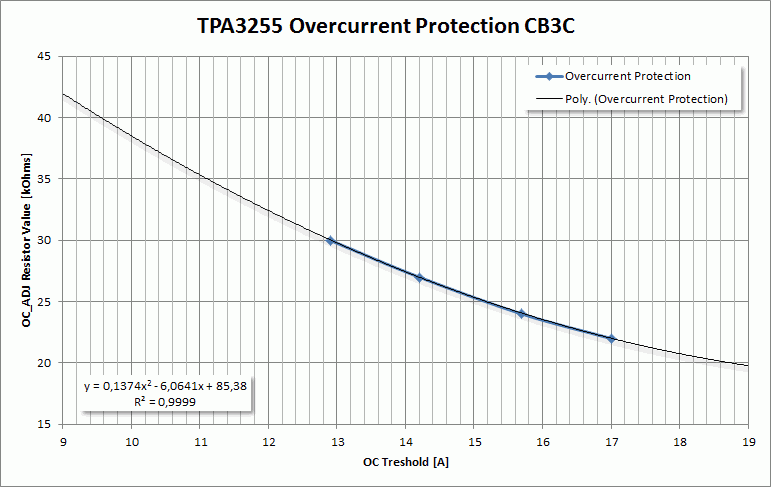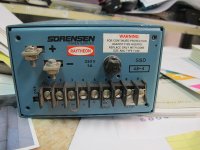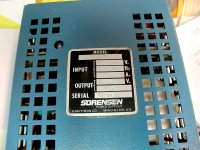Does anybody know why the supply voltage limit is set to 53.5 V instead of, e.g., 53 V or 54 V? Does the supply need to be regulated, or mustn't the supply limit be exceeded at full output power only?
Best regards!
Best regards!
Last edited:
You need to make sure, your rails wont hit any limit specified in the datasheet. Your rails aren't just PVDD set by the supply (i.e. 50V) it also includes pumping effects and overshoot.
With a bad/unregulated supply you may experience some sag which might get modulated by connection wire inductance and bulk capacitance. This need to/should be measured directly at the chip pins.
With a bad/unregulated supply you may experience some sag which might get modulated by connection wire inductance and bulk capacitance. This need to/should be measured directly at the chip pins.
Does anybody know why the supply voltage limit is set to 53.5 V instead of, e.g., 53 V or 54 V? Does the supply need to be regulated, or mustn't the supply limit be exceeded at full output power only?
Best regards!
Add to that many people are running theirs at 48V due to the ease of SMPS with that voltage.
But with only 48V supply voltage power output won't reach the specified 315 W/channel, will it?
Best regards!
Best regards!
Of course not. It's a trade-off between ease of completion and squeezing the last bits out of the system. With the added question of how much you truly benefit from that last few watts before having the police called on you. 🙂 I'm probably going to pick a couple 3255's up and run it as 4x SE + 2 BTL in an active system. Massive overkill, but hard to justify not going for the 3255's over the 3251's at the same cost.
So you hear the difference between 280 and 315W? Beside that, 315W is meant for pure resistive load without any additional connection resistance or complex impedance.
If I wanted to limit the output to less than 170W, how can I calculate power required?
Bloody less than sign keeps chopping my post.
Bloody less than sign keeps chopping my post.
Last edited:
You can use the current limit programming resistor.
Approximation of datasheet values for CB3C:

170Wrms is about 340Wpk so at 4R there will be:
SQRT(340Wpk/4R) = 9.2A -> 41kOhms -> 39kOhms choosen to have some headroom.
Approximation of datasheet values for CB3C:
170Wrms is about 340Wpk so at 4R there will be:
SQRT(340Wpk/4R) = 9.2A -> 41kOhms -> 39kOhms choosen to have some headroom.
Attachments
Last edited:
So you hear the difference between 280 and 315W?
I'd use this board(s) not for home hifi, but for PA service instead, where probably every watt counts, especially in combination with today's compact, but low efficient speaker designs.
Best regards!
Okay then.
If 315W = 0dB then 157W = -3dB (barely noticeable), 235W = -1.5dB
Hard to believe that you'll hear a difference between 280/315W.
If 315W = 0dB then 157W = -3dB (barely noticeable), 235W = -1.5dB
Hard to believe that you'll hear a difference between 280/315W.
Hard to believe that you'll hear a difference between 280/315W.
WHAT?!!! I can't hear you, the music's too loud!
😛
Anyone have a recommended power supply for these modules. Thinking of a potential multichannel for HT, 8ohm speakers
Look up earlier in the thread, but long and short, look on the major electronics suppliers (digikey, mouser) for beefy 48v single supplies.
Sorry, follow up, same process for the 12v input as well? Or would you use a step down from 48 to 12 off the main supply
This was a "buy one get three more free" deal over 10 years ago -- 48V Sorensen supplies which have been sitting on a shelf. They would seem to be OK for this project Evaluation Module project. I think I almost tried to give them away at one time -- no takers:
Attachments
- Home
- Amplifiers
- Class D
- TI TPA3255EVM


